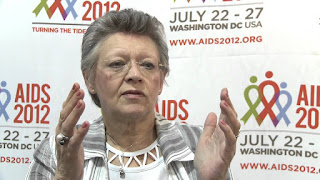Science is not all about men. Women are also invaluable, even if they don't always receive proper credit for the contributions. Take a look at these six significant discoveries made by women scientists that prove this point.
Chien-Shiung Wu, Physicist: Nature knows Left from Right
In 1957 Chinese physicist Chien-Shiung Wu made her greatest discovery: that nature knows the difference between left and right! Prior to her discovery, the conservation of parity principle stated that pairs of right- and left-handed molecules should behave in tandem; however, Wu and her team disproved this theory, which was groundbreaking in the field of physics.
Rosalind Franklin, Molecular Biologist: DNA Model
Today, it is common knowledge that DNA (deoxyribonucleic acid) is the molecule that is responsible for the functioning and development of all known living things – and it is easily recognizable. But what is not common knowledge is who was responsible for discovering the 'winding staircase' structure, better-known as the double-helix. Although James Watson and Francis Crick are most-often associated with the revelation, British molecular biologist and crystallographer, Rosalind Franklin, also played an indispensable role in the process.
Gail Martin, Biologist: Stem Cell Pioneer
For over a decade, stem cell research has been a hot topic of discussion among the medical science community. In 1981, Gail Martin made her greatest discovery and found a way to isolate embryonic stem cells (cells known for their ability to multiply and differentiate into any of the three cell types) and cultivate them in-vitro. This discovery expanded possibilities for a multitude of treatments and further research.
Françoise Barré-Sinoussi, VIrologist: A Life Dedicated to AIDS Research
When the AIDS epidemic became rampant in the US in the early 1980's, its cause puzzled doctors and scientists and everyone searched for answers surrounding this elusive ailment. In 1983, Françoise Barré-Sinoussi identified that the cause of AIDS was the human immunodeficiency virus (HIV). Her discovery laid the foundation for the development of effective treatment and other factors such as mother-child transmission.
Jocelyn Bell, Astrophysicist: Pulsars
Pulsars are highly magnetized, dense, rotating neutron stars that emit electromagnetic radiation, and they are extremely useful tools in astronomy because of their precise rotational periods. They were discovered by Irish scientist, Jocelyn Bell, during her PhD research in 1967, and the impact of her detection on the astronomical community was great. The realization of pulsars aided the credibility and research of black holes, gravitational radiation and even Einstein's theory of relativity.
Mary-Claire King, Geneticist: Battling Breast Cancer
Although Mary-Claire King is well-known for her doctoral thesis which proved that the genomes (the complete set of genes or genetic material present in a cell or organism) of chimpanzees and humans are 99% identical, she was instrumental for the groundbreaking discovery related to breast cancer. King began to study the DNA of families in 1974, hoping to ascertain whether or not breast cancer was hereditary, and if so, how it can be identified at the genetic level. She ultimately identified the genetic marker, called Chromosome 17, which was found to be responsible for multiple inherited cancers. King's research laid the foundation for the identification of the actual breast cancer-causing gene, BRCA1, and has enabled the development of many testing, screening, and treatment procedures.
These are some amazing finds! The discoveries made by these women are truly inspirational and will continue to benefit society for decades to come.






